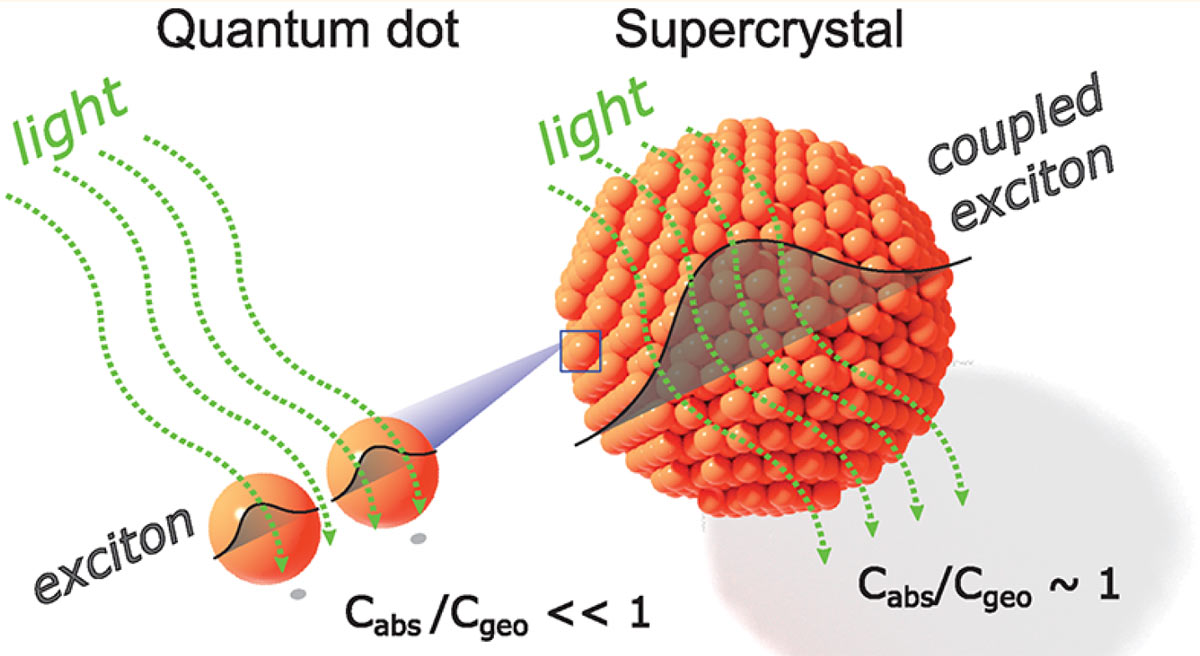Quantum dots offer promising building blocks for the assembly of new optoelectronic materials: their tunable energy levels allow designing energy states in the assembled “supersolid” that can be adapted individually to each application. Furthemore, the quantum dots, simultaneously benefit from inexpensive low-temperature solution processing and excellent photophysical properties, making them the ideal candidates for next-generation solar cells and photodetectors. However, while the working principles of these devices rely crucially on light absorption and good internal conductivity, QDs intrinsically belong to the Rayleigh regime and hence display very low absorption efficiencies. Furthermore, the conductivity is typically limited, as the charge carriers are localized within the quantum dots. Increasing the absorption efficiency of QDs, together with their electronic and excitonic coupling to enhance charge carrier mobility, is therefore of critical importance to enable practical applications. Here, we demonstrate a general and scalable approach to increase both light absorption and excitonic coupling of QDs by fabricating hierarchical meta-materials. We assemble QDs into crystalline supraparticles and demonstrate that these colloidal supercrystals (SCs) exhibit extended resonant optical behavior resulting in an enhancement in absorption efficiency in the visible range of more than 2 orders of magnitude with respect to the case of dispersed QDs. This successful light trapping strategy is complemented by the enhanced excitonic coupling observed in ligand-exchanged SCs, experimentally demonstrated through ultrafast transient absorption spectroscopy and leading to the formation of a free biexciton system on sub-picosecond time scales. These results introduce a colloidal metamaterial designed by self-assembly from the bottom up, simultaneously featuring a combination of nanoscale and mesoscale properties leading to simultaneous photonic and excitonic coupling, therefore presenting the nanocrystal analogue of supramolecular structures.

März 14, 2021